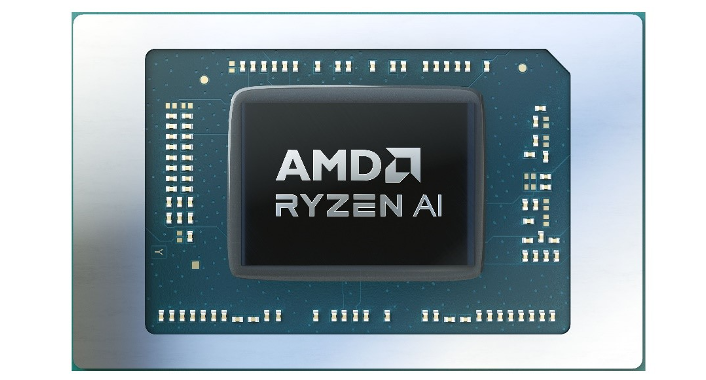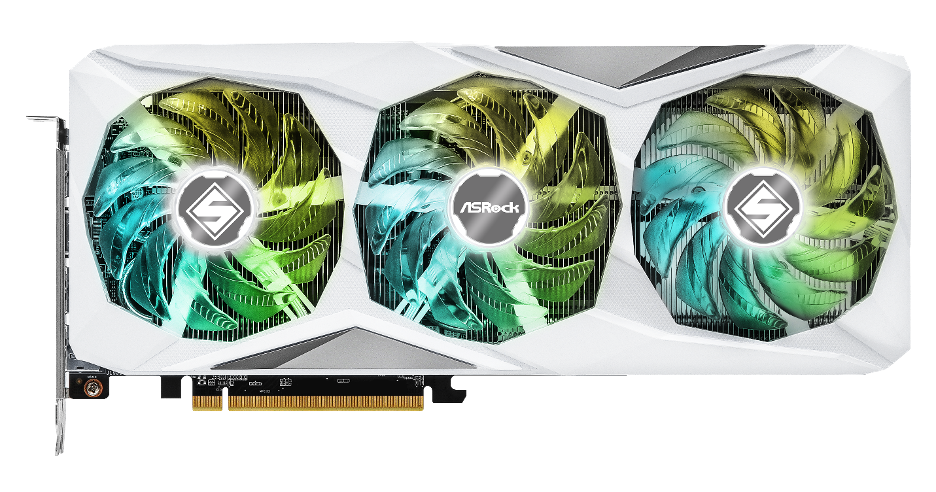
There was no shortage of talk about AI at CES 2024. However, AMD had already made its big AI announcements in mid-December ahead of CES. At its launch event, AMD announced its new high-end AI PC processors—the Ryzen 8040 series—which would be destined for PCs in 2024. However, at CES AMD took a much different tack and announced a series of products destined for older platforms as well as a series of refreshes and minor spec bumps. Here are my thoughts on AMD’s major CES 2024 announcements.
Ryzen 8000 G-Series
The Ryzen 8000 G-Series is an update to AMD’s APU family of processors intended for simpler, more mainstream PCs. These processors come with Zen 4 CPU cores, XDNA AI cores, and RDNA 3 GPU cores. This means that they have a lot of the same IP as the flagship processors, but at a little more accessible price points. The top models, the Ryzen 5 8500G and Ryzen 5 8600G, start at $179 and $229, respectively, while the Ryzen 7 8700G peaks at $329. AMD is also claiming that the Ryzen 8000G series is the first desktop processor with an NPU, which by all accounts seems to be true. The 8000G also uses the latest AM5 socket, which should mean compatibility for PCIe 5.0 and DDR5 memory as well. However, AMD has opted for PCIe 4.0 on this platform and only two channels of memory, which indicates the more mainstream target market. These processors are unlikely to be used for hardcore gaming, but more for small-form-factor PCs.
Ryzen 8040 Systems at CES
As mentioned earlier, AMD already pre-announced the Ryzen 8040 series with its latest CPU and NPU capabilities. At CES 2024, AMD touted its OEM partners, including ACER, ASUS, Lenovo, HP, and Razer. AMD played up its relationships with all of these OEMs, talking about the latest ROG products from ASUS, Yoga products from Lenovo, Blades from Razer, and Nitro V from Acer. I believe that AMD’s efforts with the 8040 series this year will demonstrate whether the company has established itself as a leader in the AI PC. The company has already indicated that an even more capable AI processor is coming at the end of this year, but I believe that AMD needs to make its AI PC messaging around software more convincing to developers and OEMs. I believe that this is necessary to counter Intel’s aggressive AI PC strategy, which includes an entire AI PC acceleration program squarely aimed at enabling developers with a long list of supporting quotes.
“New” Ryzen 5000 Series
The Ryzen 5000 series for desktops was announced in November 2020. More than three years later, AMD has decided to continue to keep the line alive with new SKUs that help to fill out the series. The Ryzen 5000 series utilizes the AM4 platform, which uses DDR4 and PCIe Gen 4 for memory and connectivity. These new processors include the Ryzen 7 5700 and 5700X3D as well as the Ryzen 5 5600GT and 5500GT. The 5600GT and 5500GT, which both come with six cores and integrated graphics, have 65-watt TDPs and sell for $140 and $125, respectively. The Ryzen 7 5700 also has a 65-watt TDP and sells for $175, while offering eight CPU cores. The Ryzen 7 5700X3D sets itself apart with its 3-D cache, increasing the price to $249; it still has eight CPU cores, but with 100MB of cache compared to the 5700’s 20MB.
This is still plenty of performance for most applications, especially because these new SKUs expand the 5000 series into more mainstream terrain where memory bandwidth and GPU performance are less bottlenecked. Furthermore, the new 5000 series fulfills AMD’s commitment to keep sockets like AM4 around for longer to give people more longevity and upgradeability for their PCs. This is something that I think a lot of people will overlook, but AM4 was launched in 2016 and is still getting new processors in 2024, a full eight years later.

AMD Radeon RX 7600XT
Last but certainly not least, AMD introduced the Radeon RX 7600XT at CES 2024. This new GPU still has an older monolithic die design—as opposed to the rest of the 7000 series, which is chiplet-based. Additionally, it is nearly identical to the Radeon RX 7600 except for double the memory and a few minor tweaks. The clock speeds are slightly increased and the memory bus stays the same size, but the VRAM has been doubled from 8GB to 16GB. These increases in clock speed and memory also increase the TDP by 25 watts. However, it remains to be seen whether the doubling of the memory will be necessary for any gaming since most gamers will use this card at lower resolutions and be more CPU-bound. Unfortunately, I believe that this $329 SKU is more about satisfying the zeitgeist around 8GB not being enough VRAM for modern games. I do believe that claim to be true, but only if you are running games at a higher resolution. That said, I don’t expect most gamers with a 7600-series card to do that.
Wrapping up
At CES 2024, AMD unleashed a series of new processors for desktop users which cover the gamut of mainstream products from many different generations of AMD’s CPU, GPU, and NPU IP. While the Ryzen 8000G series might not be as performant as the Ryzen 7000 series in some ways, it does provide a lot of value, especially with the first NPU on a desktop processor as well as the powerful RDNA 3 embedded graphics. I also believe that AMD’s continued support for the AM4 socket and the continued refreshes of the 5000 series will satisfy gamers who might not want to break the bank upgrading their CPU. The Radeon RX 7600 XT also brings a mainstream GPU offering at $329, but I am not convinced that we need 16GB in this class for anything more than a spec war.






















































































